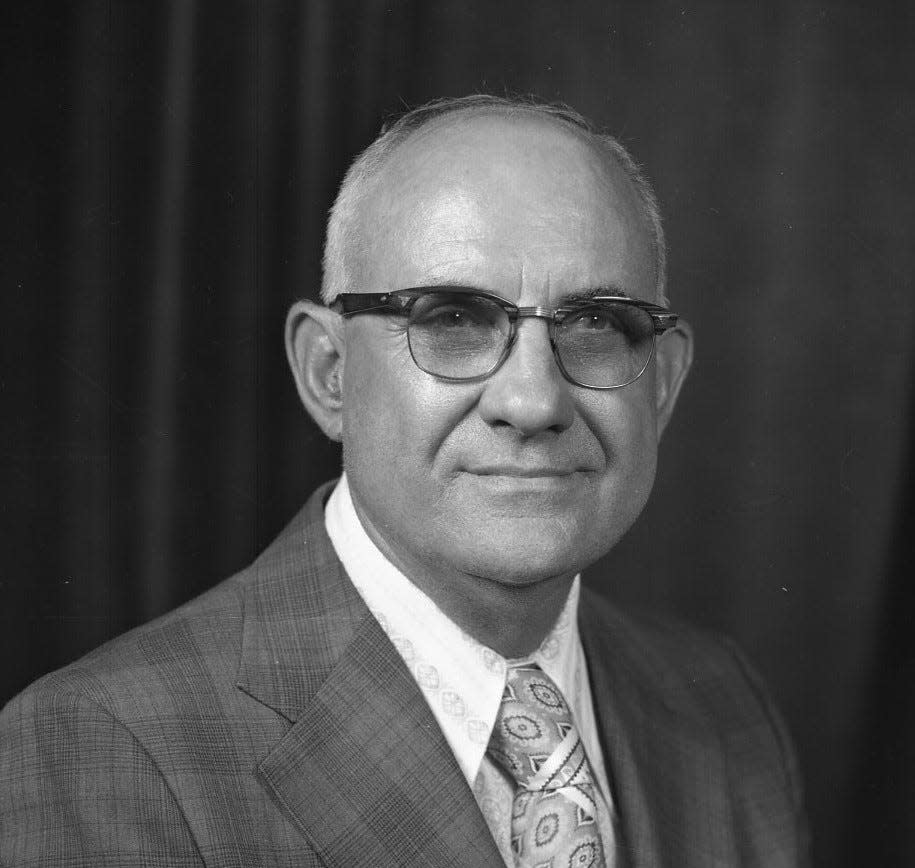Weston Wednesday: The Stokes family and cemetery

Editor's Note: In collaboration with the Bartlesville Area History Museum, the Examiner-Enterprise has revived the late Edgar Weston's 'Revisiting the Past' columns that ran in the newspaper from 1997-99. Weston's columns recount the history of Bartlesville as well as Washington, Nowata and Osage counties.
Located near Bar Dew Lake, in the northwest corner of Washington County, the Stokes Cemetery is one of the oldest and most historic sites in the county. A cross section of early pioneers came to this area and remained, while many moved on to other locations and returned to Stokes Cemetery for eternal rest, some with unmarked graves. The earliest graves were entered in 1875 with the deaths of Hugh Russell, Ruth Ann Butler Russell and William Morgan Ringo, and the most recent has been James Ray Smith, buried this year (2022), joining his parents.
The Stokes family came to Stokes Hollow in 1880 from Marshfield, MO. Granville and Phoebe Haymes Stokes and their eight children located on the Russell farm. James H. Stokes, the oldest son, was born August 16, 1862. He married Georgia Russell, an orphan Cherokee lady born in 1866. Her parents, Hugh Russell and Ruth Ramsey Russell, both died in 1875 leaving Georgia Ann Russell to be raised by her grandparents, John and Mary Tyner Butler Ramsey.
James H. Stokes, being an intermarried white to a Cherokee, vouched for his father Granville Stokes so that he could remain in the Cherokee Nation, by paying 50 cents each month at the Bartles’ store. The Permit Record Book was kept there and “Jake” Bartles was authorized as the Permit Book holder, recorder and fee collector.
The Stokes family became large farmers and medium sized ranchers. They had a nice horse herd and that was a special interest for several years. James H. Stokes was successful in his farming and hired several families to work in his pursuits. The Juby family was hired by Stokes and later became successful business men in the cafe and oil business.
Stokes constructed a fine ranch house that is still standing, overlooking the Caney Valley, where they farmed. The home is about 110 years-old and needs repair but the buildings still show the quality of the construction of the 1880’s. Olive and Gretta Stokes were born there and were taken to Kansas City, MO as girls to get a better education and learn the social graces, along with several young girls from Bartlesville. William Johnstone accompanied them on the train and helped them enroll in school there. We will include more about Olive Stokes in a later column.
Jake Bartles became associated with the Stokes family and they expanded into farming on a large scale on Double Creek near Ramona and Jake Bartles purchased their farming interests there. When the railroad from Caney, Kansas to Collins Coal Mine came into focus, Bartles encouraged Jim Stokes to prepare to feed the construction crew building the railroad at Ramona. It was not a town at that time, the cabin of Sam Kimbro, an old buffalo hunter, was the only building on the site. Jim Stokes is credited as the founder of Bon-Ton, which became Ramona.
Two towns or communities had been started in the area of Ramona. Ringo, I.T. had become a Trading Post in 1887 on the west bank of the Caney River about three miles north and a mile east of Ramona. The community was named Ringo for George Whitfield Ringo, a prominent
white family that first settled in Stokes Hollow, northwest of Dewey. T.P. Greenwood and his sons established a general merchandise store around 1887. W.C. Rogers, last elected Principal Chief of the Cherokees, and William Partin and son had stores at Ringo. William S. Walker set up a saw mill and grist mill. Charles Keeler, a brother of George B. Keeler, operated a store, hotel, and blacksmith shop. A post office was operated in Greenwood’s store from December 12, 1889 until February 15, 1900 with Ira Hollingsworth as the postmaster. A school was established and maintained for some time after the settlement ceased to exist.
Big farmers and ranchers rented large acreages from the Cherokee Nation, they raised wheat and corn and ran great herds of cattle on open range around Ringo. A good Caney River crossing east led to the Talala Trail.
When the railroad came through Ramona in 1900 it missed Ringo and merchants and residents moved to Ramona and Ringo became a ghost town. All that is left there now is Charles Keeler’s home which kept roomers, and a race track. If there were ten people in one place, there always was a race track. Two other communities disappeared at the same time. Austin, I.T., west of Ramona, and Twin Mounds, I.T., northwest of Ramona.
The Santa Fe Railroad provided shipping of corn, wheat, oats, cattle, and hogs. Earlier, they had to be hauled or trailed to Talala, I.T. to access the railroad. Ramona became a growing city when the Prairie Oil and Gas Company located the Ramona Tank Farm there. It was billed as the largest tank farm in the world.
The Stokes family lives were entangled with other pioneers of the area and in the end, eleven Stokes family members were returned to the Stokes Cemetery as their final resting place.
This article originally appeared on Bartlesville Examiner-Enterprise: Weston Wednesday: The Stokes family and cemetery

